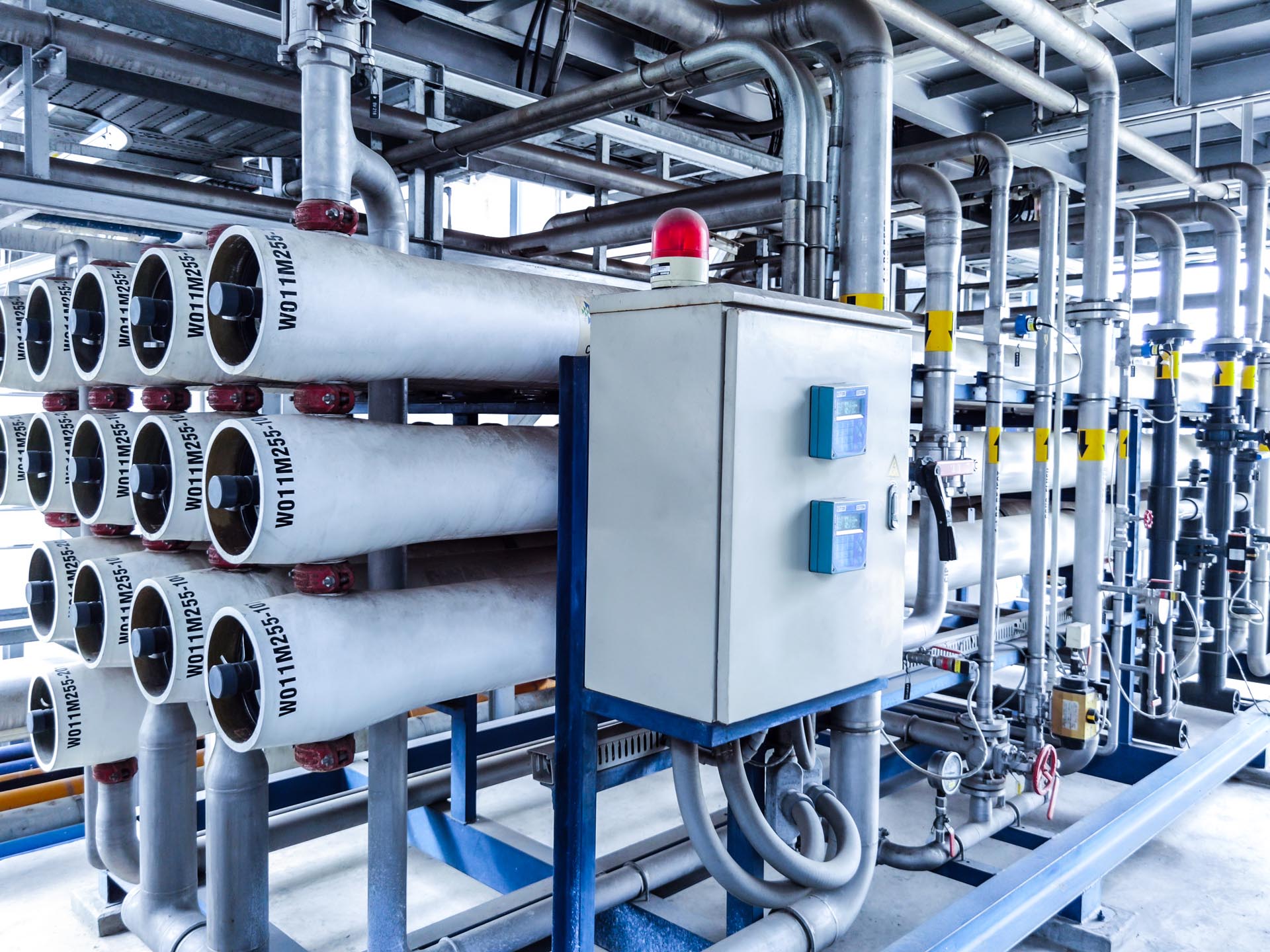Reverse osmosis (RO) is a highly efficient water purification process widely utilised across various industries. The technology applies pressure to force water through a semi-permeable membrane, leaving dissolved solids, contaminants, and impurities behind. RO efficiently removes diverse contaminants, including salts, minerals, bacteria, viruses, and organic compounds.
The reverse osmosis process operates on selective permeation, reversing the natural movement of molecules from regions of higher solute concentration to lower solute concentration. In RO, the feedwater is subjected to a pressure higher than the osmotic pressure, enabling water to pass through the semi-permeable membrane. Meanwhile, most dissolved solids and contaminants are rejected and remain in the concentrated reject stream, creating brine.
